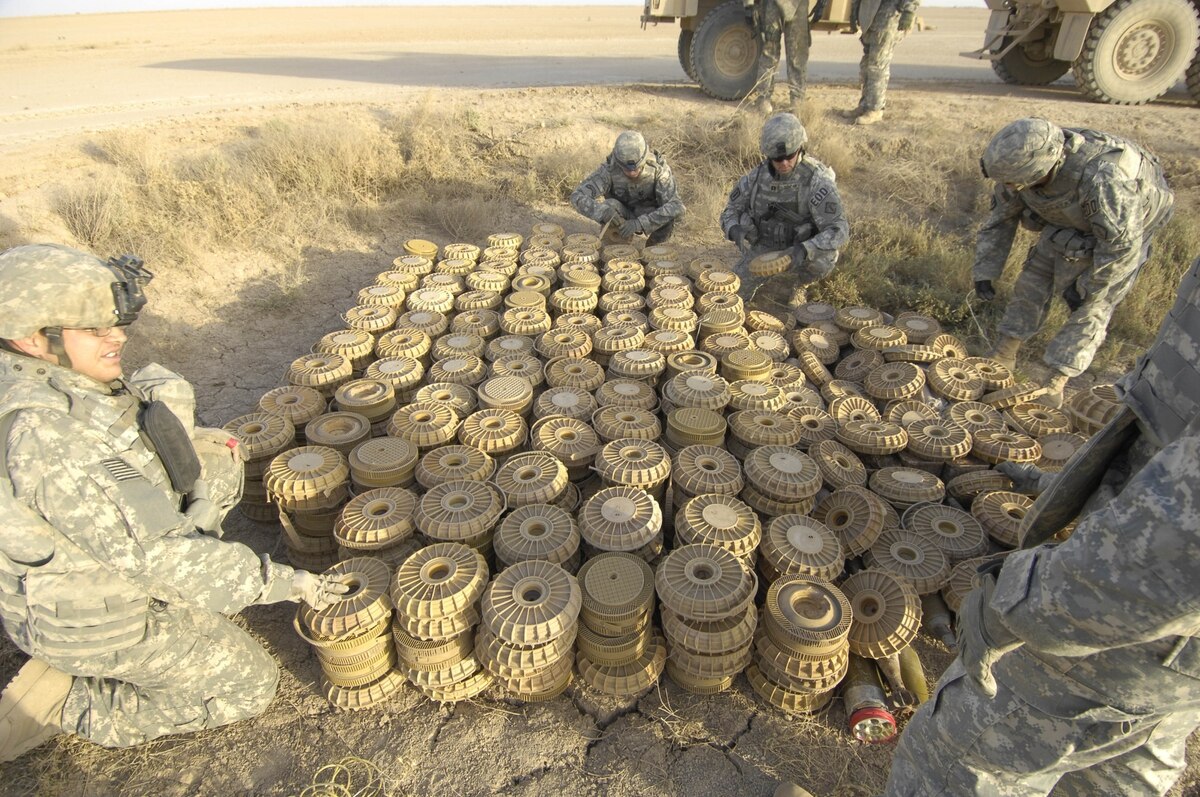- Mines laid by Boko Haram and other groups leave millions at risk, particularly in Borno State where insurgency most acute
Emmanuel Akinwotu, The Guardian (UK) West Africa Correspondent, Monday 14 December 2020
More than 100 people were killed or injured by landmines across North-east Nigeria in the first three months of this year, according to a new report.
Mines laid during the conflict between Boko Haram, other armed groups and the Nigerian army left 408 people dead and 644 injured between January 2016 and August this year, says the Mines Advisory Group (MAG), a landmine clearance charity. Since March 2018, the country has recorded an average of five landmine casualties a week. Actual numbers are thought to be higher due to underreporting. The first 15 weeks of this year saw one casualty a day.
Landmine casualty rates in Nigeria are now the fifth highest in the world. Most of the casualties occurred in Borno state, where the impact of Boko Haram’s 11-year jihadist insurgency has been most acutely felt.
Locally manufactured landmines, unexploded bombs and improvised explosive devices are now scattered across the largely rural north-east. The mines pose a particular risk to millions of internally displaced people struggling to survive, searching for fuel or tilling their farmlands.

Bakura, 14, survived a landmine explosion that killed his young relative Mustapha. Photograph: Sean Sutton/Mines Advisory Group
“Many displaced Nigerians are in unfamiliar territory and are unaware of the risks,” said MAG’s Zainab Waziri. “They go out to forage or search for firewood or scrap metal in landmine-contaminated areas with devastating consequences.”
The devices pose a particularly lethal threat to children, who often mistake them for household items or toys while playing outside, she said.
“Last November, five girls between eight and 17 found a metal ring on the ground. Two were young daughters of my sister. They thought it might be jewellery. One picked it up but it was linked to a bomb. They all died.”
In another incident, Mustapha, nine, and his 14-year-old relative, Bakura, found a metal object near their refugee camp in Borno. Both had fled Boko Haram attacks with their families. The boys thought the metal object could be sold for scrap, but it detonated, killing Mustapha and severely injuring Bakura and a neighbour.
Mines are often laid in remote areas and around army bases. Nigeria’s military tries to clear them, but does not reveal data on its work, even to clearance groups in the region.
Last year Nigeria committed to becoming mine-free by 2025, and announced it would re-establish a national action group, but is yet to do so. The lack of an agency to coordinate the work was hindering efforts to save lives, the report said.
“Displaced families must be assured that their homes and lands are safe before being encouraged to return home. Mine action must therefore be incorporated in the government’s plans for return,” it added.
Awareness among the population also remains a challenge. Only 22% of people in conflict-affected communities can identify a landmine or unexploded ordnance, MAG found.

Facebook Twitter Pinterest Young girls participate in a risk education lesson in Maiduguri. Photograph: Sean Sutton/Mines Advisory Group
Continued attacks by Boko Haram and Islamic State West Africa Province, which split from the group in 2016, appear to be worsening. At least 110 farmers were killed as they tended to their rice fields in Borno state last month. Residents told local media that the jihadists were a significant presence in the town, often asking people to help them carry goods to their hideouts. Reports have grown of jihadists forcing people in remote areas to pay taxes and provide food.
The government has made repeated claims to have defeated the groups, playing down attacks on civilians and the military, and urging millions of refugees to return to their towns. But a strategy to fortify urban areas has seen the countryside and transit routes become vulnerable to attack.
More than 10 million people across Borno, Adamawa and Yobe states – more than half of the region’s population – are in need of humanitarian assistance, with one in four under the age of five.





